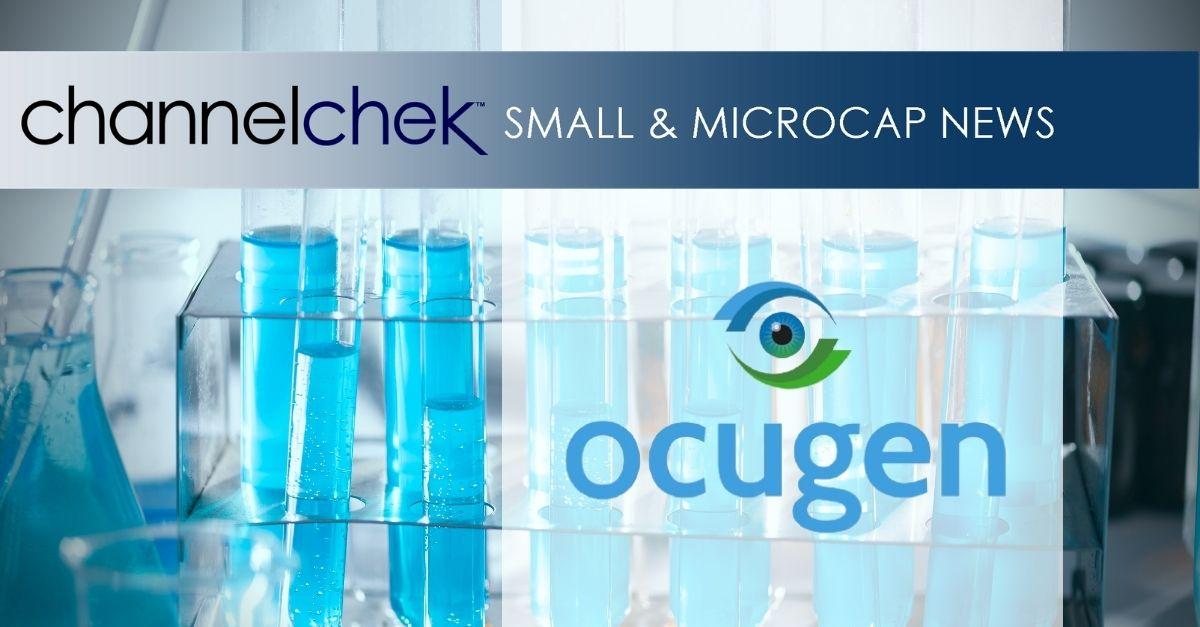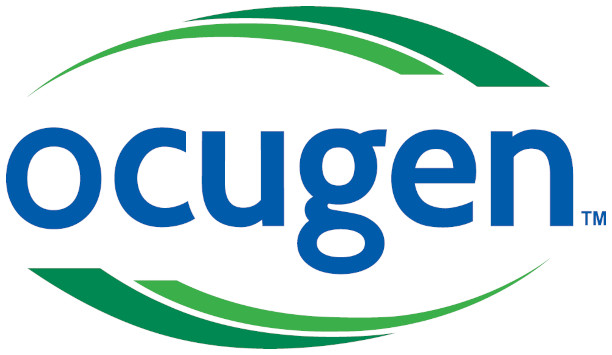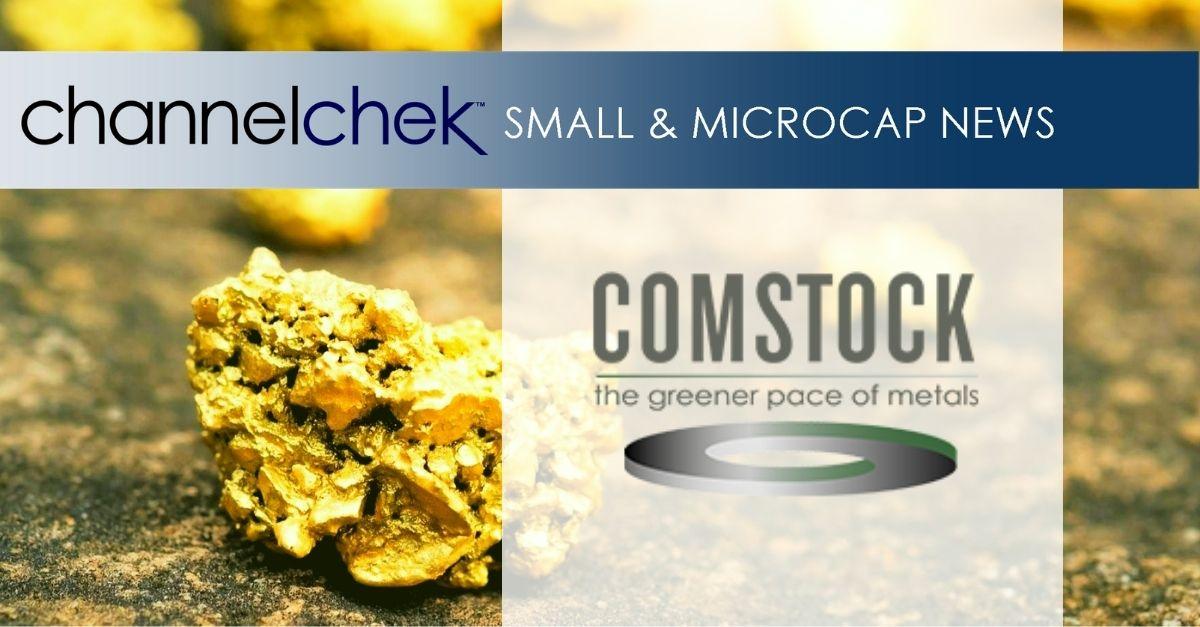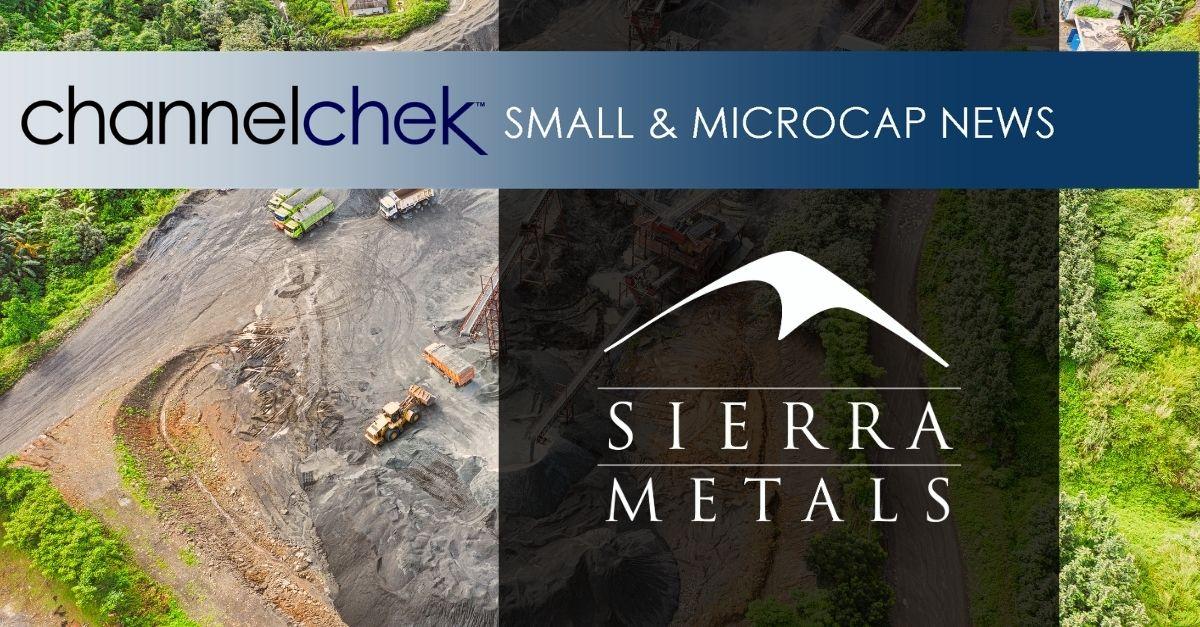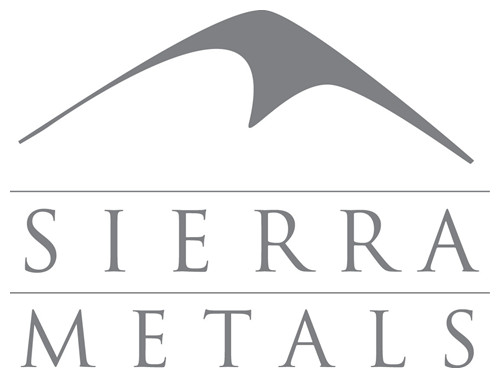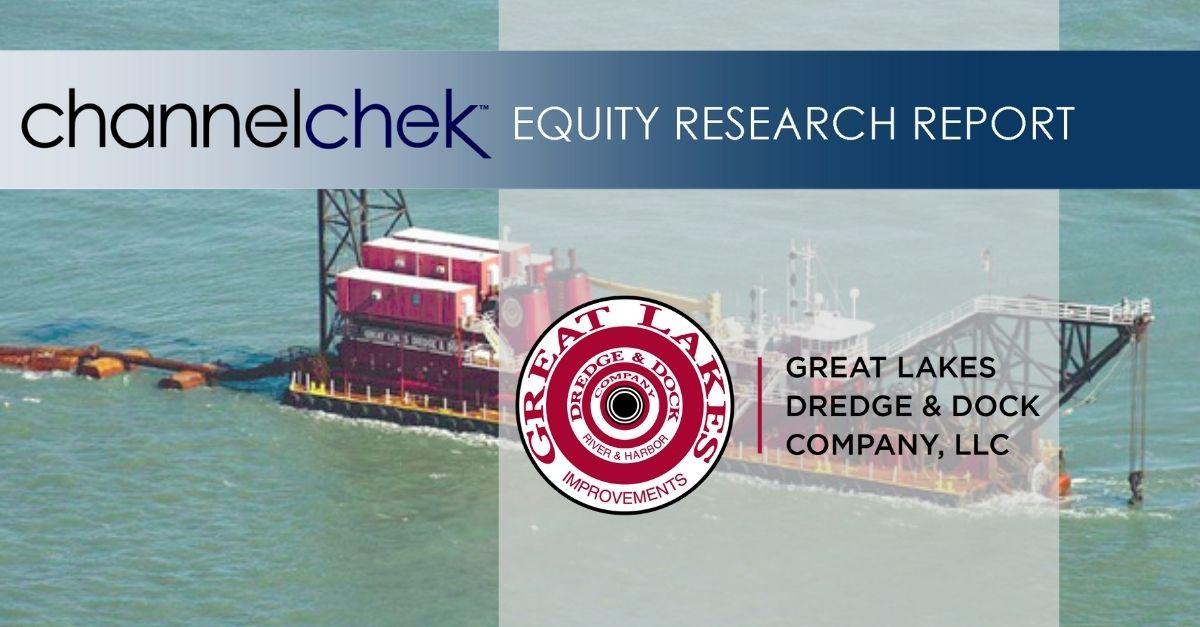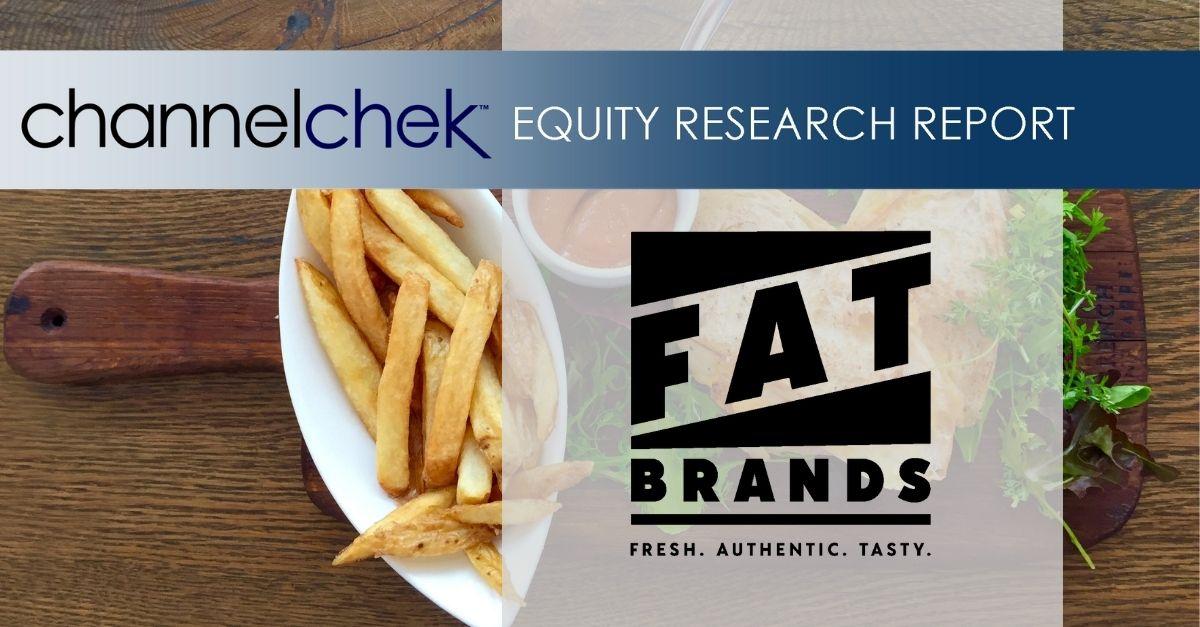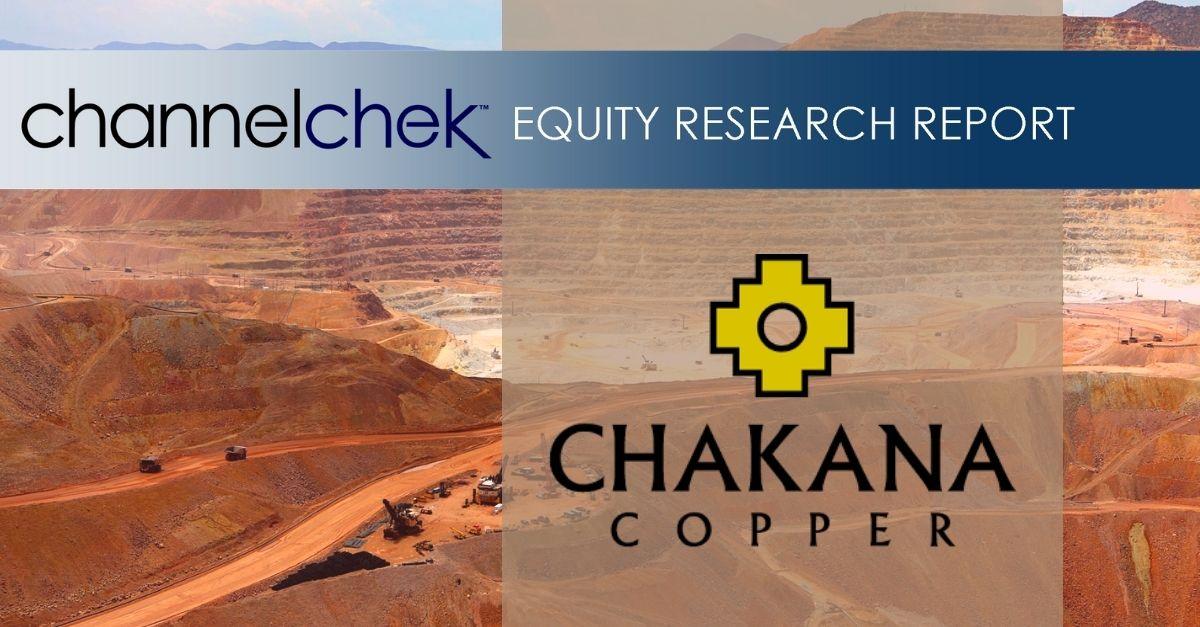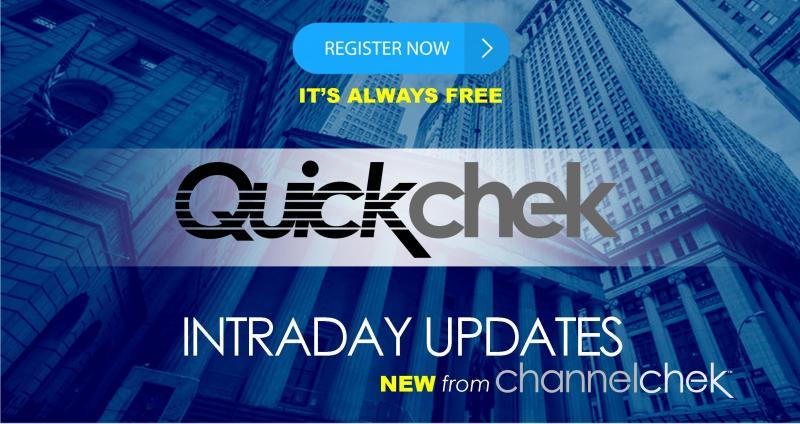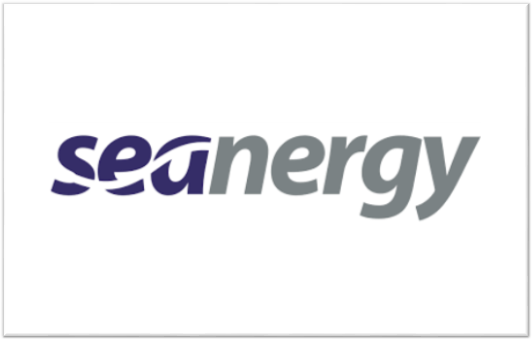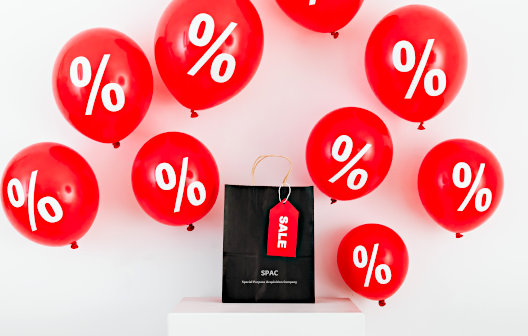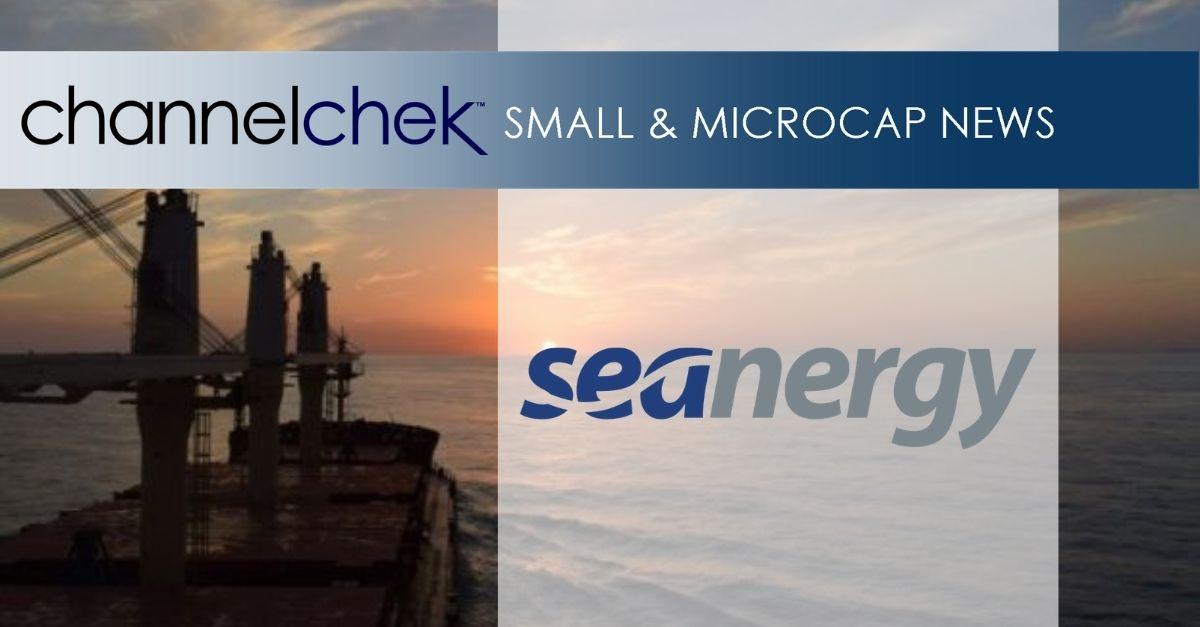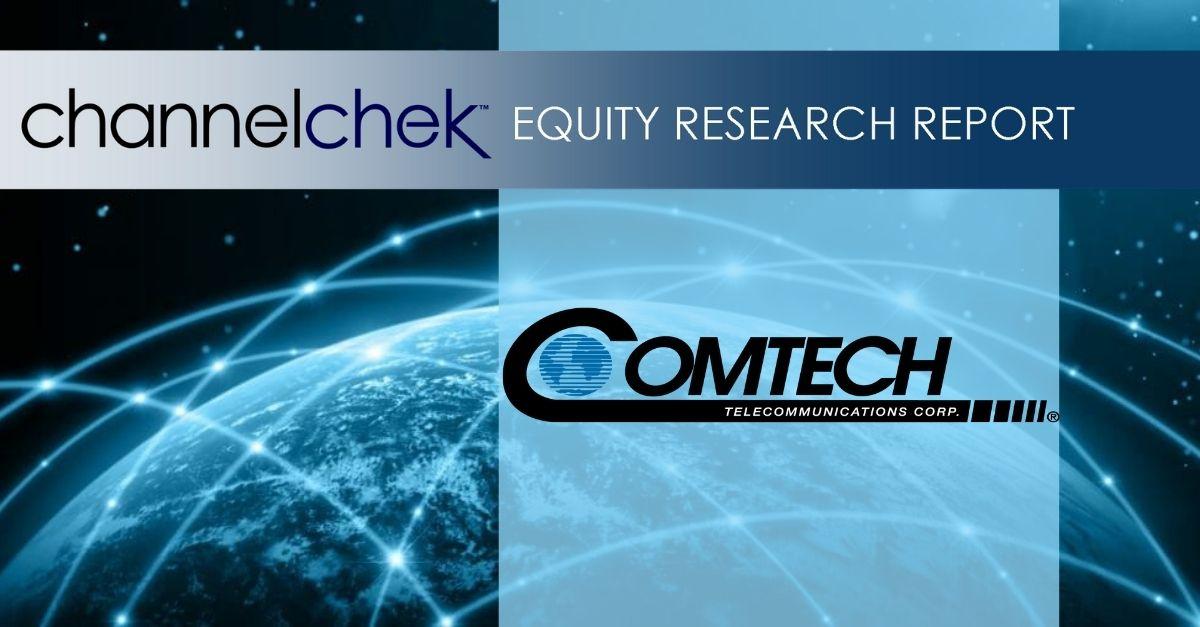
Seanergy Maritime Holdings Corp. Reports Record Financial Results for the Third Quarter and Nine-Month Period Ended September 30, 2021
Seanergy Maritime Holdings Corp. Reports Record Financial Results for the Third Quarter and Nine–Month Period Ended September 30, 2021
Highlights of the Third Quarter of 2021:
-
Gross revenues: $50 million in Q3 2021, as compared to $20.4 million in Q3 2020, up 146%
-
Net Income: $20.1 million in Q3 2021, as compared to $3.6 million in Q3 2020, up 459%
-
EBITDA1: $30.1 million in Q3 2021, as compared to $12.7 million in Q3 2020, up 137%
-
Adjusted EBITDA1: $32.2 million in Q3 2021, as compared to $7.8 million in Q3 2020, up 312%
Highlights of the Nine Months ended September 30, 2021:
-
Gross revenues: $100 million in 9M 2021, as compared to $43.5 million in 9M 2020, up 130%
-
Net Income: $20.7 million in 9M 2021, as compared to a net loss of $16 million in 9M 2020
-
EBITDA1: $47.4 million in 9M 2021, as compared to $11.6 million in 9M 2020, up 307%
-
Adjusted EBITDA1: $51.4 million in 9M 2021, as compared to $7.3 million in 9M 2020, up 602%
First Nine Months of 2021 and Recent Developments:
-
Acquisition of 7 modern Japanese Capesizes and sale of our oldest vessel in 2021 to date, representing total investment of $193.2 million and fleet increase of 55%
-
Ten new time-charter employment agreements with world-renowned charterers
-
100% of the fleet employed under time-charters (“T/Cs”), 88% of which at index-linked rates
-
Financing and refinancing transactions of $134.2 million
November 2, 2021 – Glyfada, Greece – Seanergy Maritime Holdings Corp. (the “Company”) (NASDAQ: SHIP), announced today its financial results for the third quarter ended September 30, 2021.
For the quarter ended September 30, 2021, the Company generated gross revenues of $50.0 million, a 146% increase compared to the third quarter of 2020. Adjusted EBITDA for the quarter was $32.2 million, from $7.8 million in the same period of 2020 . Net income for the third quarter was $20.1 million compared to net income of $3.6 million in the third quarter of 2020. The daily Time Charter Equivalent (“TCE”)1 of the fleet for the third quarter of 2021 was $30,764, marking a 90% increase compared to $16,219 for the same period of 2020.
For the nine-month period ended September 30, 2021, gross revenues were $100.0 million, increased by 130% when compared to $43.5 million in the same period of 2020. Adjusted EBITDA for the first nine months of 2021 was $51.4 million, compared to an adjusted EBITDA of $7.3 million in the same period of 2020. The daily TCE of the fleet for the first nine months of 2021 was $23,449 compared to $10,267 in the first nine months of 2020. The average daily OPEX was $5,806 compared to $5,573 in the respective period of 2020.
Cash and cash-equivalents, restricted cash, term deposits, including a short-term receivable from vessel sale proceeds as of September 30, 2021, stood at $52.6 million. The M/V Leadership was delivered to her new owners on September 30, 2021 and due to timing of payments, the gross proceeds of $13.3 million, including bunkers and other inventories, were received in the beginning of October. Shareholders’ equity at the end of the third quarter was $222.3 million, compared to $95.7 million on December 31, 2020. Long-term debt (senior and junior loans and other financial liabilities) net of deferred charges stood at $204.6 million as of September 30, 2021, from $169.8 million as of the end of 2020, representing a 20% increase. In the same period, following the addition of six of our new acquisitions and the removal of the M/V Leadership, the book value of our fleet increased by 55% to $396.8 million from $256.7 million.
Fourth Quarter 2021 TCE Guidance:
As of the date hereof, approximately 69% of the Company fleet’s expected operating days in the fourth quarter of 2021 have been fixed at an estimated TCE of approximately $38,440. Assuming that for the remaining operating days of our index-linked T/Cs, the respective vessels’ TCE will be equal to the average Forward Freight Agreement (“FFA”) rate of approximately $28,000 per day (based on the FFA curve of November 1, 2021), our estimated TCE for the fourth quarter will be approximately $35,2002. Our TCE guidance for the fourth quarter of 2021 includes certain conversions (6 vessels) of index-linked charters to fixed, which were concluded in the third quarter of 2021 as part of our freight hedging strategy. The following table provides the break-down:
|
Operating Days
|
TCE
|
|
TCE – fixed rate (index-linked conversion)
|
552
|
$31,273
|
|
TCE – fixed rate
|
184
|
$29,761
|
|
TCE – index linked unhedged
|
778
|
$39,281
|
|
Total / Average
|
1,514
|
$35,205
|
Stamatis Tsantanis, the Company’s Chairman & Chief Executive Officer, stated:
“I am very excited to announce our financial results for the third quarter and nine-month period that ended on September 30, 2021, marking a record profit for Seanergy since we started acquiring our current fleet in 2015. The exceptional financial performance of our Company is attributed to the combination of the well-timed acquisitions that we executed in the past year, as well as the highest dry bulk market of the last decade.
As far as our results for the third quarter of 2021 are concerned, our daily TCE was $30,764, outperforming our guidance for the quarter and marking an increase of 90% compared to the TCE of the third quarter of 2020. The TCE of the fleet for the first nine months of 2021 was $23,449 per day, increased by 128% when compared to a daily TCE of $10,267 in the same period of 2020. Our fourth quarter TCE performance to date and TCE guidance for the entire quarter is equally strong at $38,440 and $35,200 per day respectively. Adjusted EBITDA for the third quarter and first nine months of 2021 was $32.2 million and $51.4 million, respectively, as compared to an adjusted EBITDA of $7.8 million and $7.3 million in the respective periods of 2020. Net result for the quarter was a profit of $20.1 million increased by 459%, from $3.6 million in the same period of 2020. This impressive increase underscores the operating leverage of the Company and its tremendous upside potential in today’s earnings environment.
Regarding our fleet growth strategy, investment in vessel acquisitions in 2021 to date has totalled approximately $193.2 million for seven high quality Japan-built Capesize vessels with an average age of 11.1 years, with the most recent acquisition being that of the 2010-built M/V Dukeship. Within the third quarter, we took timely delivery of two Capesize vessels, while we also delivered the M/V Leadership to its new owners. The total investment has been fully funded by our strong cash reserves, as well as our new financing arrangements.
Concerning our commercial developments in 2021 to date, we have concluded ten new time-charter employment agreements with at least one-year duration, in each case with leading charterers in the Capesize sector. Following the recently agreed employment contracts for the M/Vs Dukeship and Goodship, 15 vessels will be employed on index-linked charters. This strategy has proven to be very efficient since our fleet’s earnings best reflect daily movements of the BCI and we are able to capitalize on market spikes. In most cases, the agreements entail options to convert the index-linked rate to a fixed one, based on the prevailing FFA curve, allowing us, at our option, to lock our future market exposure at profitable rates. By this, we have achieved what we believe to be the optimal positioning of our fleet for a commodities super-cycle.
On the financing front, since the beginning of 2021 we have concluded new financings and refinancings of $134.2 million while repaying $82.3 million on existing debt facilities. Since the start of the third quarter, we have agreed two new financings of approximately $30 million, while repaying $12.6 million on our existing financings. Specifically, we completed the financing of the M/V Friendship with one of our long-term lenders, while receiving a commitment letter from a major Greek Bank for a sustainability-linked loan to be secured by the M/V Worldship. Our weighted average interest rate for the first nine months of 2021 was reduced by approximately 130 basis points over the same period of 2020 and we expect this trend to continue in 2022.
With respect to our ESG initiatives, we have always been at the forefront of all major environmental regulations, and we are intensifying our efforts to meet IMO’s decarbonization targets for 2030. We have recently endorsed the Call to Action for Shipping Decarbonization, a global coalition of over 190 industry leaders and organizations representing the entire maritime value chain. In addition, we have signed agreements with DeepSea for the installation of Artificial Intelligence performance systems on our fleet and with Marsoft for the screening of selected vessels, which promotes transparency of our energy efficiency upgrades.
With a view to optimising the energy efficiency of our fleet, we have decided, in some cases in cooperation with our charterers, to install Energy Saving Devices (“ESDs”) on the entire fleet. This upgrade program will progress gradually, with the installation of the ESDs taking place during each vessel’s upcoming drydocking and is intended to ensure that the speed of our expanded fleet will not be materially impacted by the upcoming environmental regulations. Finally, we are investing in the research and development of emission reduction technologies, including biofuel blend trials, which is expected to contribute considerably to the transition to a greener shipping industry.
Regarding market conditions and future prospects, we have recently experienced the highest market levels of the last 12 years in the Capesize sector, with daily rates reaching $87,000 per day at the start of the fourth quarter. Notwithstanding the short-term correction of recent weeks, we believe that the Capesize market is supported by the most favourable demand-supply fundamentals of its recent history. More specifically, the Capesize orderbook still stands at the lowest level of the last 25 years and the upcoming environmental regulations are expected to lead to a significant vessel supply squeeze in the following years. In addition, demand for dry raw materials is supported by the global energy supply shortages, as well as the worldwide stimuli and infrastructure projects.
On that basis, we feel confident about the prospects of the Capesize market for years to come.”
Company Fleet following M/V Dukeship delivery:
|
Vessel Name
|
Vessel Class
|
Capacity (DWT)
|
Year Built
|
Yard
|
Scrubber Fitted
|
Employment Type
|
FFA conversion option(19)
|
Earliest T/C expiration
|
|
Patriotship
|
Capesize
|
181,709
|
2010
|
Imabari
|
Yes
|
T/C – fixed rate(1)
|
–
|
06/2022
|
|
Worldship
|
Capesize
|
181,415
|
2012
|
Koyo – Imabari
|
Yes
|
T/C – fixed rate(2)
|
–
|
09/2022
|
|
Hellasship
|
Capesize
|
181,325
|
2012
|
Imabari
|
–
|
T/C Index Linked(3)
|
–
|
04/2022
|
|
Fellowship
|
Capesize
|
179,701
|
2010
|
Daewoo
|
–
|
T/C Index Linked(4)
|
Yes
|
06/2022
|
|
Championship
|
Capesize
|
179,238
|
2011
|
Sungdong SB
|
Yes
|
T/C Index Linked(5)
|
Yes
|
11/2023
|
|
Partnership
|
Capesize
|
179,213
|
2012
|
Hyundai
|
Yes
|
T/C Index Linked(6)
|
Yes
|
06/2022
|
|
Knightship
|
Capesize
|
178,978
|
2010
|
Hyundai
|
Yes
|
T/C Index Linked(7)
|
–
|
05/2023
|
|
Lordship
|
Capesize
|
178,838
|
2010
|
Hyundai
|
Yes
|
T/C Index Linked(8)
|
Yes
|
05/2022
|
|
Goodship
|
Capesize
|
177,536
|
2005
|
Mitsui
|
–
|
T/C Index Linked(9)
|
Yes
|
08/2022
|
|
Friendship
|
Capesize
|
176,952
|
2009
|
Namura
|
–
|
T/C Index Linked(10)
|
–
|
12/2022
|
|
Tradership
|
Capesize
|
176,925
|
2006
|
Namura
|
–
|
T/C Index Linked(11)
|
Yes
|
05/2022
|
|
Flagship
|
Capesize
|
176,387
|
2013
|
Mitsui
|
–
|
T/C Index Linked(12)
|
Yes
|
05/2026
|
|
Gloriuship
|
Capesize
|
171,314
|
2004
|
Hyundai
|
–
|
T/C Index Linked(13)
|
Yes
|
01/2022
|
|
Geniuship
|
Capesize
|
170,057
|
2010
|
Sungdong SB
|
–
|
T/C Index Linked(14)
|
Yes
|
02/2022
|
|
Premiership
|
Capesize
|
170,024
|
2010
|
Sungdong SB
|
Yes
|
T/C Index Linked(15)
|
–
|
11/2022
|
|
Squireship
|
Capesize
|
170,018
|
2010
|
Sungdong SB
|
Yes
|
T/C Index Linked(16)
|
–
|
12/2022
|
|
Dukeship(17)
|
Capesize
|
181,453
|
2010
|
Japanese yard
|
–
|
T/C Index Linked(18)
|
Yes
|
12/2022
|
|
Total / Average age
|
|
3,011,083
|
11.7
|
|
|
|
|
|
|
|
|
|
|
|
|
|
(1) Chartered by a European cargo operator and delivered to the charterer on June 7, 2021 for a period of about 12 to about 18 months. The daily charter hire is fixed at $31,000.
(2) Chartered by a U.S. commodity trading company and delivered to the charterer on September 2, 2021 for a period of about 12 to about 16 months. The daily charter hire is fixed at $31,750.
(3) Chartered by NYK Line and delivered to the charterer on May 10, 2021 for a period of minimum 11 to maximum 15 months. The daily charter hire is based on the BCI.
(4) Chartered by Anglo American, a leading global mining company, and delivered to the charterer in June 2021 for a period of minimum 12 to about 15 months from the delivery date. The daily charter hire is based on the BCI.
(5) Chartered by Cargill and delivered to the charterer on November 7, 2018 for a period of employment of 60 months, with an additional period of about 24 to about 27 months at the charterer’s option. The daily charter hire is based on the BCI plus a net daily scrubber premium of $1,740.
(6) Chartered by a major European utility and energy company and delivered to the charterer on September 11, 2019 for a period of minimum 33 to maximum 37 months with an optional period of about 11 to maximum 13 months. The daily charter hire is based on the BCI.
(7) Chartered by Glencore and delivered to the charterer on May 15, 2020 for a period of about 36 to about 42 months with two optional periods of 11 to 13 months. The daily charter hire is based on the BCI.
(8) Chartered by a major European utility and energy company and delivered on August 4, 2019 for a period of minimum 33 to maximum 37 months with an optional period of about 11 to maximum 13 months. The daily charter hire is based on the BCI plus a net daily scrubber premium of $3,735 until May 2021.
(9) Chartered by an International commodities trader and will be delivered to the charterer by November 10, 2021 for a period of about 9 to about 12 months. The daily charter hire is based on the BCI.
(10) Chartered by NYK Line and was delivered to the charterer on July 29, 2021 for a period of minimum 17 to maximum 24 months. The daily charter hire is based on the BCI.
(11) Chartered by a major South Korean industrial company and was delivered to the charterer on June 15, 2021 for a period employment of minimum 11 to about 15 months. The daily charter hire is based on the BCI.
(12) Chartered by Cargill. The vessel was delivered to the charterer on May 10, 2021 for a period of 60 months. The daily charter hire is based at a premium over the BCI minus $1,325 per day.
(13) Chartered by Pacbulk Shipping and delivered to the charterer on April 23, 2020 initially for a period of about 4 to about 7 months, then for a further time charter period of about 10 to about 14 months. Upon expiration of the previous T/C period, in June 2021, the vessel commenced the second extension period up to minimum January 1, 2022 to maximum April 30, 2022. The daily charter hire is based on the BCI.
(14) Chartered by Pacbulk Shipping and delivered to the charterer on March 22, 2021 for a period of about 11 to about 14 months from the delivery date. The daily charter hire is based on the BCI.
(15) Chartered by Glencore and delivered to the charterer on November 29, 2019 for a period of minimum 36 to maximum 42 months with two optional periods of minimum 11 to maximum 13 months. The daily charter hire is based on the BCI plus a net daily scrubber premium of $2,055.
(16) Chartered by Glencore and delivered to the charterer on December 19, 2019 for a period of minimum 36 to maximum 42 months with two optional periods of minimum 11 to maximum 13 months. The daily charter hire is based on the BCI plus a net daily scrubber premium of $2,055.
(17) Expected delivery within November 2021.
(18) Chartered by NYK Line and will be delivered to the charterer upon its delivery to the Company for a period of about 13 to about 18 months. The daily charter hire is based on the BCI.
(19) The Company has the option to convert the index-linked rate to a fixed one for a period ranging between 2 and 12 months, based on the prevailing Capesize FFA Rate for the selected period.
Fleet Data:
(U.S. Dollars in thousands)
|
Q3 2021
|
Q3 2020
|
9M 2021
|
9M 2020
|
|
Ownership days (1)
|
1,477
|
975
|
3,632
|
2,795
|
|
Operating days (2)
|
1,439
|
973
|
3,494
|
2,737
|
|
Fleet utilization (3)
|
97.4%
|
99.8%
|
96.2%
|
97.9%
|
|
TCE rate (4)
|
$30,764
|
$16,219
|
$23,449
|
$10,267
|
|
Daily Vessel Operating Expenses (5)
|
$5,865
|
$5,984
|
$5,806
|
$5,573
|
(1) Ownership days are the total number of calendar days in a period during which the vessels in a fleet have been owned or chartered in. Ownership days are an indicator of the size of the Company’s fleet over a period and affect both the amount of revenues and the amount of expenses that the Company recorded during a period.
(2) Operating days are the number of available days in a period less the aggregate number of days that the vessels are off-hire due to unforeseen circumstances. Operating days includes the days that our vessels are in ballast voyages without having finalized agreements for their next employment.
(3) Fleet utilization is the percentage of time that the vessels are generating revenue and is determined by dividing operating days by ownership days for the relevant period.
(4) TCE rate is defined as the Company’s net revenue less voyage expenses during a period divided by the number of the Company’s operating days during the period. Voyage expenses include port charges, bunker (fuel oil and diesel oil) expenses, canal charges and other commissions. The Company includes the TCE rate, a non-GAAP measure, as it believes it provides additional meaningful information in conjunction with net revenues from vessels, the most directly comparable U.S. GAAP measure, and because it assists the Company’s management in making decisions regarding the deployment and use of the Company’s vessels and in evaluating their financial performance. The Company’s calculation of TCE rate may not be comparable to that reported by other companies. The following table reconciles the Company’s net revenues from vessels to the TCE rate.
(In thousands of U.S. Dollars, except operating days and TCE rate)
|
Q3 2021
|
Q3 2020
|
9M 2021
|
9M 2020
|
|
Net revenues from vessels
|
48,179
|
19,651
|
96,409
|
42,032
|
|
Less: Voyage expenses
|
3,910
|
3,870
|
14,477
|
13,930
|
|
Net operating revenues
|
44,269
|
15,781
|
81,932
|
28,102
|
|
Operating days
|
1,439
|
973
|
3,494
|
2,737
|
|
TCE rate
|
$30,764
|
$16,219
|
$23,449
|
$10,267
|
(5) Vessel operating expenses include crew costs, provisions, deck and engine stores, lubricants, insurance, maintenance and repairs. Daily Vessel Operating Expenses are calculated by dividing vessel operating expenses by ownership days for the relevant time periods. The Company’s calculation of daily vessel operating expenses may not be comparable to that reported by other companies. The following table reconciles the Company’s vessel operating expenses to daily vessel operating expenses.
(In thousands of U.S. Dollars, except ownership days and Daily Vessel Operating Expenses)
|
Q3 2021
|
Q3 2020
|
9M 2021
|
9M 2020
|
|
Vessel operating expenses
|
10,042
|
6,399
|
24,470
|
16,141
|
|
Less: Pre-delivery expenses
|
1,379
|
565
|
3,381
|
565
|
|
Vessel operating expenses before pre-delivery expenses
|
8,663
|
5,834
|
21,089
|
15,576
|
|
Ownership days
|
1,477
|
975
|
3,632
|
2,795
|
|
Daily Vessel Operating Expenses
|
$5,865
|
$5,984
|
$5,806
|
$5,573
|
Net Income / (Loss) to EBITDA and Adjusted EBITDA Reconciliation:
(In thousands of U.S. Dollars)
|
Q3 2021
|
Q3 2020
|
9M 2021
|
9M 2020
|
|
Net income/(loss)
|
20,064
|
3,592
|
20,704
|
(16,037)
|
|
Add: Net interest and finance cost
|
4,560
|
5,296
|
12,867
|
16,540
|
|
Add: Depreciation and amortization
|
5,490
|
3,835
|
13,827
|
11,143
|
|
EBITDA
|
30,114
|
12,723
|
47,398
|
11,646
|
|
Add: stock based compensation
|
2,773
|
236
|
4,704
|
825
|
|
Less: Gain on sale of vessel
|
(716)
|
–
|
(716)
|
–
|
|
Less: Gain on debt refinancing
|
–
|
(5,150)
|
–
|
(5,150)
|
|
Adjusted EBITDA
|
32,171
|
7,809
|
51,386
|
7,321
|
Earnings Before Interest, Taxes, Depreciation and Amortization (“EBITDA”) represents the sum of net income / (loss), interest and finance costs, interest income, depreciation and amortization and, if any, income taxes during a period. EBITDA is not a recognized measurement under U.S. GAAP. Adjusted EBITDA represents EBITDA adjusted to exclude stock-based compensation and the non-recurring gain on sale of vessel and gain on debt refinancing, which the Company believes are not indicative of the ongoing performance of its core operations.
EBITDA and adjusted EBITDA are presented as we believe that these measures are useful to investors as a widely used means of evaluating operating profitability. EBITDA and adjusted EBITDA as presented here may not be comparable to similarly titled measures presented by other companies. These non-GAAP measures should not be considered in isolation from, as a substitute for, or superior to, financial measures prepared in accordance with U.S. GAAP.
Interest and Finance Costs to Cash Interest and Finance Costs Reconciliation:
(In thousands of U.S. Dollars)
|
Q3 2021
|
Q3 2020
|
9M 2021
|
9M 2020
|
|
Interest and finance costs, net
|
(4,560)
|
(5,296)
|
(12,867)
|
(16,540)
|
|
Add: Amortization of deferred finance charges
|
739
|
189
|
2,441
|
538
|
|
Add: Amortization of convertible note beneficial conversion feature
|
772
|
1,457
|
2,010
|
3,873
|
|
Add: Amortization of other deferred charges (shares issued to third party)
|
77
|
129
|
251
|
430
|
|
Cash interest and finance costs
|
(2,972)
|
(3,521)
|
(8,165)
|
(11,699)
|
Third Quarter and Recent Developments:
Fleet Updates
M/V Friendship
In July 2021, the Company took delivery of the 176,952 dwt Capesize bulk carrier, built in 2009 in Japan, which was renamed M/V Friendship. The vessel has been fixed on a T/C with NYK Line, a leading Japanese charterer, with earliest redelivery to the Company in December 2022. The gross daily rate of the T/C is based on 102% of the BCI.
M/V Worldship
In August 2021, the Company took delivery of the 181,415 dwt Capesize bulk carrier, built in 2012 in Japan, which was renamed M/V Worldship. The M/V Worldship has been fixed on a T/C with a world-leading U.S. commodity trading company, at a gross daily rate of $31,750 with earliest redelivery to the Company in September 2022.
M/V Leadership
In June 2021, the Company agreed to sell the 2001-built M/V Leadership to an unaffiliated party for a net sale price of approximately $12.0 million. The vessel was delivered to her new owners on September 30, 2021. The sale improved the average age of the Company’s fleet.
M/V Dukeship
In October 2021, the Company agreed to acquire the 181,453 dwt Capesize bulk carrier, built in 2010 in Japan, which will be renamed M/V Dukeship. The purchase price of $34.3 million is expected to be funded with cash on hand. The M/V Dukeship is expected to be delivered within November 2021.
Commercial Updates
M/V Dukeship
The M/V Dukeship has been chartered to NYK at a rate linked to the BCI, for a period of about 13 to about 18 months starting as of the vessel’s delivery to the Company. In addition, the Company has the option to convert to a fixed rate based on the prevailing Capesize FFA for the selected period.
M/V Goodship
The M/V Goodship has been chartered to an international commodities trader and will be delivered to the charterer within November 2021 for a period of about 9 to about 12 months. The daily charter hire is based on the BCI. In addition, the Company has the option to convert to a fixed rate based on the prevailing Capesize FFA for the selected period
Financing Updates
Alpha Bank S.A.
On August 9, 2021, the Company entered into a $44.12 million credit facility to (i) refinance the previous facility of $31.12 million secured by the M/V Squireship and the M/V Lordship (“Tranche A”) and (ii) finance the acquisition of the 2009-built Capesize M/V Friendship (“Tranche B”). Tranche A has the same terms as the previous loan facility. The interest rate for Tranche B is LIBOR plus 3.25% per annum, and the term is four years. Tranche B is repayable through 4 quarterly instalments of $0.7 million followed by 12 quarterly instalments of $0.38 million and a balloon of $5.7 million payable together with the last instalment.
Commitment Letter – M/V Worldship
In October 2021, the Company obtained a commitment letter from a leading Greek bank for a sustainability- linked loan facility to finance part of the acquisition cost of the M/V Worldship. Pursuant to the commitment letter, the sustainability-linked loan will be for an amount of $16.85 million with a five-year term. The principal will be repaid through 4 quarterly instalments of $1.0 million, 2 quarterly instalments of $0.75 million, 14 quarterly instalments of $0.38 million and a final balloon payment of $6.1 million payable at maturity. The loan will be secured by, among other things, a mortgage on the M/V Worldship and a corporate guarantee by the Company. The interest rate will be 3.05% plus LIBOR per annum, which can be further improved based on certain emission reduction thresholds. The approval is subject to definitive documentation, which the Company expects to be completed within November 2021.
Update on Number of Shares Outstanding
As of November 1, 2021, the Company has 174,688,240 shares of common stock issued and outstanding. This includes 3,000,000 shares issued in October 2021 to Jelco Delta Holding Corp. (“Jelco”) following the conversion of $3,600,000 of the principal amount of the convertible note issued to Jelco on March 12, 2015, as amended to date, at the conversion price of $1.20 per share. As a result, the principal amount of the note was reduced from $3,800,000 to $200,000.
Seanergy Maritime Holdings Corp.
Unaudited Condensed Consolidated Balance Sheets
(In thousands of U.S. Dollars)
|
|
September 30,
2021
|
|
|
December 31, 2020*
|
|
|
ASSETS
|
|
|
|
|
|
|
|
Cash and cash equivalents, restricted cash, term deposits and short-term receivable from vessel sale proceeds
|
|
52,560
|
|
|
23,651
|
|
|
Vessels, net
|
|
396,792
|
|
|
256,737
|
|
|
Other assets
|
|
15,705
|
|
|
14,857
|
|
|
TOTAL ASSETS
|
|
465,057
|
|
|
295,245
|
|
|
|
|
|
|
|
|
|
LIABILITIES AND STOCKHOLDERS’ EQUITY
|
|
|
|
|
|
|
|
Long-term debt and other financial liabilities
|
|
204,639
|
|
|
169,762
|
|
|
Convertible notes
|
|
17,235
|
|
|
14,516
|
|
|
Other liabilities
|
|
20,932
|
|
|
15,273
|
|
|
Stockholders’ equity
|
|
222,251
|
|
|
95,694
|
|
|
TOTAL LIABILITIES AND STOCKHOLDERS’ EQUITY
|
|
465,057
|
|
|
295,245
|
|
* Derived from the audited consolidated financial statements as of the period as of that date
Seanergy Maritime Holdings Corp.
Unaudited Condensed Consolidated Statements of Operations
(In thousands of U.S. Dollars, except for share and per share data, unless otherwise stated)
|
|
|
Three months ended
September 30,
|
|
Nine months ended
September 30,
|
|
|
|
|
2021
|
|
2020
|
|
2021
|
|
|
2020
|
|
|
|
Revenues:
|
|
|
|
|
|
|
|
|
|
|
|
|
Vessel revenues
|
|
50,020
|
|
20,352
|
|
100,043
|
|
|
43,500
|
|
|
|
Commissions
|
|
(1,841
|
)
|
(701
|
)
|
(3,634
|
)
|
|
(1,468
|
)
|
|
|
Vessel revenue, net
|
|
48,179
|
|
19,651
|
|
96,409
|
|
|
42,032
|
|
|
|
Expenses:
|
|
|
|
|
|
|
|
|
|
|
|
|
Voyage expenses
|
|
(3,910
|
)
|
(3,870
|
)
|
(14,477
|
)
|
|
(13,930
|
)
|
|
|
Vessel operating expenses
|
|
(10,042
|
)
|
(6,399
|
)
|
(24,470
|
)
|
|
(16,141
|
)
|
|
|
Management fees
|
|
(400
|
)
|
(270
|
)
|
(1,029
|
)
|
|
(773
|
)
|
|
|
General and administrative expenses
|
|
(4,419
|
)
|
(1,537
|
)
|
(9,715
|
)
|
|
(4,682
|
)
|
|
|
Depreciation and amortization
|
|
(5,490
|
)
|
(3,835
|
)
|
(13,827
|
)
|
|
(11,143
|
)
|
|
|
Gain on sale of vessel
|
|
716
|
|
–
|
|
716
|
|
|
–
|
|
|
|
Operating income/(loss)
|
|
24,634
|
|
3,740
|
|
33,607
|
|
|
(4,637
|
)
|
|
|
Other expenses:
|
|
|
|
|
|
|
|
|
|
|
|
|
Interest and finance costs, net
|
|
(4,560
|
)
|
(5,296
|
)
|
(12,867
|
)
|
|
(16,540
|
)
|
|
|
Gain on debt refinancing
|
|
–
|
|
5,150
|
|
–
|
|
|
5,150
|
|
|
|
Other, net
|
|
(10
|
)
|
(2
|
)
|
(36
|
)
|
|
(10
|
)
|
|
|
Total other expenses, net:
|
|
(4,570
|
)
|
(148
|
)
|
(12,903
|
)
|
|
(11,400
|
)
|
|
|
Net income/(loss)
|
|
20,064
|
|
3,592
|
|
20,704
|
|
|
(16,037
|
)
|
|
|
|
|
|
|
|
|
|
|
|
|
|
|
Net income/(loss) per common share, basic
|
|
0.12
|
|
0.08
|
|
0.14
|
|
|
(0.57
|
)
|
|
|
Weighted average number of common shares outstanding, basic
|
|
166,710,006
|
|
46,144,608
|
|
147,403,541
|
|
|
28,118,984
|
|
|
|
Net income/(loss) per common share, diluted
|
|
0.10
|
|
0.04
|
|
0.13
|
|
|
(0.57
|
)
|
|
|
Weighted average number of common shares outstanding, diluted
|
|
205,974,543
|
|
89,041,036
|
|
186,370,709
|
|
|
28,118,984
|
|
|
About Seanergy Maritime Holdings Corp.
Seanergy Maritime Holdings Corp. is the only pure-play Capesize ship-owner publicly listed in the US. Seanergy provides marine dry bulk transportation services through a modern fleet of Capesize vessels. On a ‘fully-delivered’ basis, the Company’s fleet will consist of 17 Capesize vessels with an average age of 11.7 years and aggregate cargo carrying capacity of 3,011,083 dwt.
The Company is incorporated in the Marshall Islands and has executive offices in Glyfada, Greece. The Company’s common shares trade on the Nasdaq Capital Market under the symbol “SHIP”, its Class A warrants under “SHIPW” and its Class B warrants under “SHIPZ”.
Please visit our company website at: www.seanergymaritime.com.
Forward-Looking Statements
This press release contains forward-looking statements (as defined in Section 27A of the Securities Act of 1933, as amended, and Section 21E of the Securities Exchange Act of 1934, as amended) concerning future events. Words such as “may”, “should”, “expects”, “intends”, “plans”, “believes”, “anticipates”, “hopes”, “estimates” and variations of such words and similar expressions are intended to identify forward-looking statements. These statements involve known and unknown risks and are based upon a number of assumptions and estimates, which are inherently subject to significant uncertainties and contingencies, many of which are beyond the control of the Company. Actual results may differ materially from those expressed or implied by such forward-looking statements. Factors that could cause actual results to differ materially include, but are not limited to, the Company’s operating or financial results; the Company’s liquidity, including its ability to service its indebtedness; competitive factors in the market in which the Company operates; shipping industry trends, including charter rates, vessel values and factors affecting vessel supply and demand; future, pending or recent acquisitions and dispositions, business strategy, areas of possible expansion or contraction, and expected capital spending or operating expenses; risks associated with operations outside the United States; risks associated with the length and severity of the ongoing novel coronavirus (COVID-19) outbreak, including its effects on demand for dry bulk products and the transportation thereof; and other factors listed from time to time in the Company’s filings with the SEC, including its most recent annual report on Form 20-F. The Company’s filings can be obtained free of charge on the SEC’s website at www.sec.gov. Except to the extent required by law, the Company expressly disclaims any obligations or undertaking to release publicly any updates or revisions to any forward-looking statements contained herein to reflect any change in the Company’s expectations with respect thereto or any change in events, conditions or circumstances on which any statement is based.
For further information please contact:
Seanergy Investor Relations
Tel: +30 213 0181 522
E-mail: ir@seanergy.gr
Capital Link, Inc.
Paul Lampoutis
230 Park Avenue Suite 1536
New York, NY 10169
Tel: (212) 661-7566
E-mail: seanergy@capitallink.com
1 EBITDA and TCE rate are non-GAAP measures. Please see the reconciliation below of EBITDA to net income and TCE rate to net revenues from vessels, in each case the most directly comparable U.S. GAAP measure.
2 This guidance is based on certain assumptions and there can be no assurance that these TCE estimates, or projected utilization will be realized. TCE estimates include certain floating (index) to fixed rate conversions concluded in previous periods. For vessels on index-linked T/Cs, the TCE realized will vary with the underlying index, and for the purposes of this guidance, the TCE assumed for the remaining operating days of an index-linked T/C is equal to the average FFA rate of $28,000 per day for November and December 2021 as of November1, 2021. Spot estimates are provided using the load-to-discharge method of accounting. Load-to-discharge accounting recognizes revenues over fewer days as opposed to the discharge-to-discharge method of accounting used prior to 2018, resulting in higher rates for these days and only voyage expenses being recorded in the ballast days. Over the duration of the voyage (discharge-to-discharge) there is no difference in the total revenues and costs to be recognized. The rates quoted are for days currently contracted. Increased ballast days at the end of the quarter will reduce the additional revenues that can be booked based on the accounting cut-offs and therefore the resulting TCE will be reduced accordingly.


